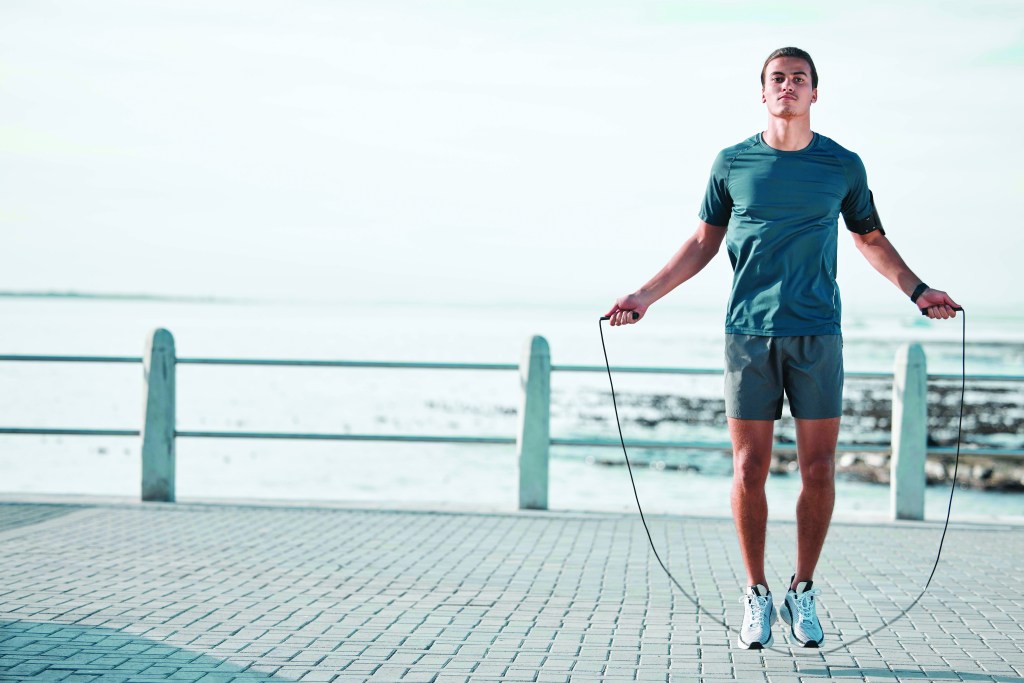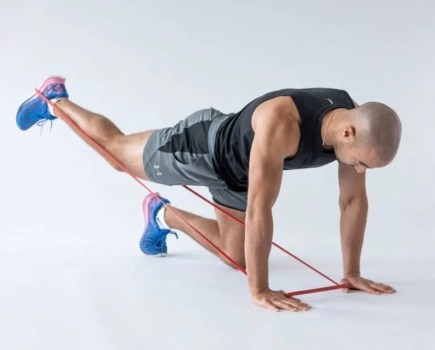Looking for a cheap, challenging workout that can rival the toughest cardio sessions? Look no further than skipping
You’d be forgiven for thinking that only boxers dedicate time to skipping but we strongly suggest you reconsider as it can offer your cardio fitness hope on a rope.
It’s a challenging aerobic workout that can be done either at the gym as part of your warm-up routine or in a circuit training session and if it’s a home workout you’re after, a skipping rope is by far the cheapest and most space-efficient fitness accessory among the plethora of gadgets on offer.
As always, it’s wise to loop before you leap so here are some basics to ensure you’ll be good to go:
• Choose your weapons – A quality leather rope with wooden handles is the best.
• Check your space – Make sure you won’t hit anything (or anyone) with the rope. The rope should be long enough to reach your armpits if you stand in the middle of the loop.
• Sole survivor – Barefoot skipping may look cool, but your feet won’t like it so buy some decent cross trainers that cushion the balls of your feet, support the ankles and allow sole flexibility.
• Go soft – Your feet should land softly after each jump, with the ball of your foot first, then rolling through the lateral arch to the heel. It is the reverse of the foot action used in jogging.
• Keep your head up – Posture is an important part of the exercise, looking at your feet will cause stress to your neck muscles.
Let’s jump-start with technique tips and variations to challenge your coordination and cardio:
BASIC SKIP
Start with a handle in each hand and the rope resting on the floor behind your heels. Keep your hands at hip level and perform a quick posture check – core tight, shoulders back and down, head up. Use the wrists, not arms, to swing the rope overhead and down to your feet. As it approaches your feet, keep them together, and jump only a few centimeters off the ground to let it pass underneath you.

Land on the balls of your feet, as softly as possible and repeat, going slowly at first, trying to find a steady rhythm. If you struggle to time your jump, make the rope hit the ground a foot or so in front of you before jumping as the noise of the rope hitting the floor will help you to time your jump.
CROSSOVER
This looks more difficult than it actually is. Start with the basic skipping technique and when the rope is directly above your head, cross your arms at waist level. As the rope approaches the floor, hop over it. Once it’s overhead again, uncross your arms so that they’re back in the starting position. Keep your wrists firm at all times, with your hands low and in close.
SIDE TO SIDE
Hop from side to side as the rope passes under your feet. Be aware it’s only necessary to hop a small distance to each side and remember to keep the knees and ankles soft to avoid injury.
TWIST
As you jump up, twist at the waist so that your legs and feet are now facing 45 degrees to the right. Concentrate on keeping your feet together throughout the movement. On the next swing, jump and twist from the waist down, this time to the left. While learning this move, to make it easier, slow your pace and jump a little higher. Ensure that the whole of your leg (and not just the lower leg) turns with you – or you could put yourself at risk of a knee injury.
RUN
Rest the rope on the floor behind your heels and lift your right foot about 10cm off the floor, with your weight resting on the left. Now begin as in the basic skip but hopping on the left foot for 8 repetitions then change to the right foot. When that feels easy, lower the number to four hops, then two, then one…hey presto, you’re jogging.
SPLIT
This is simply a star jump without the arm movements. Begin with your basic jump but aim for a little more height than usual. As you land, plant the feet about hip-width apart, returning to the centre on the next jump. Avoid landing with your feet too far apart, as this can result in you getting tangled up.







